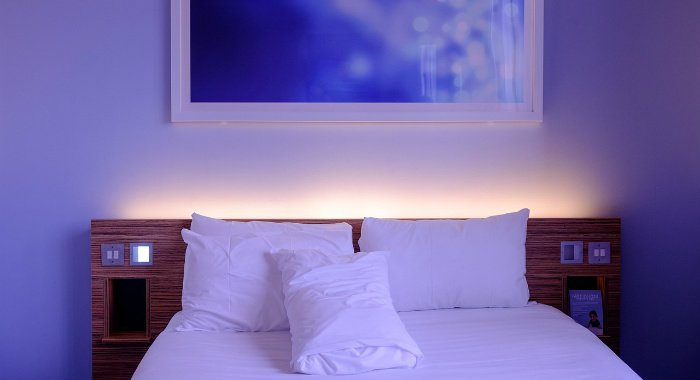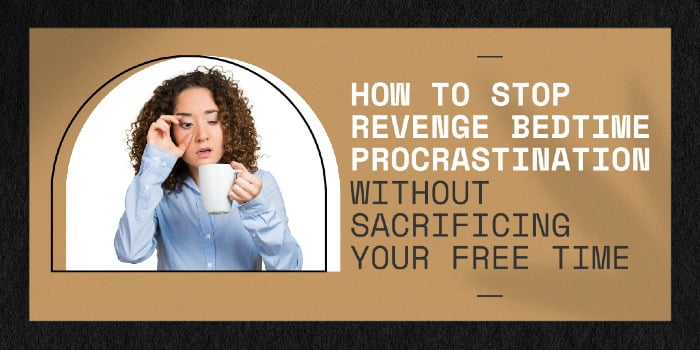Sleep paralysis is one of the most terrifying sleep conditions that you can suffer from.
Taking your ability your ability to move, sleep paralysis is where your body is stuck inside a dream while your mind is awake. Because your body still thinks its dreaming, you will often find your self hallucinating or feeling like you’re stuck inside a nightmare.
Despite 30% of the UK population experiencing sleep paralysis at least once in their lives, it’s often misunderstood.
In fact, 38% of people who have suffered from sleep paralysis thought they were having a stroke, dying, being abducted by aliens or even possessed by ghosts.
But sleep paralysis isn’t a supernatural event. It’s a scientific process that happens while you’re asleep. Find out exactly what sleep paralysis is and how you can prevent it from happing in our guide here.
What causes sleep paralysis?
To understand what causes sleep paralysis, you need to look closer at what happens when we fall asleep.
You don’t just drift away and that’s it until morning. When you’re asleep, you body cycles through 5 stages of sleep.
These stages are divided into two main categories of sleep: Non-REM sleep (stages 1-4) and REM sleep (stage 5).
Non-REM (Rapid Eye Sleep) is where you muscles relax, your breathing and heart rate slows down and where your body goes from a state of light sleep to deep sleep. In contrast, REM sleep is the most active stage of sleep. It’s where your brain comes alive with activity, sending you sounds, images and other messages that make up your dreams.
All 5 of these stages are crucial to helping you feel rested, recharged and helping you process emotions. Sleep paralysis happens when you move between stage 5 of REM sleep and being awake, confusing the two stages.
The possible causes of this are:
- Not getting enough sleep during the night, from short bouts of sleep deprivation or long-term conditions such as insomnia.
- Irregular sleeping patterns, like suddenly sleeping through the day or suffering from jet lag.
- Narcolepsy, which is a long-term sleep condition that causes you to fall asleep suddendly throughout the day.
- A family history of sleep paralysis.
- Sleeping on your back.
Sleep paralysis usually happens when you’re waking up. In some occasions, it can happen when you’re falling asleep but this is a rare occurrence.
Even though you’ll be mentally awake and aware of your surroundings, your body will be physically asleep. This means you can’t move any of your limbs apart from your eyes and you may find it difficult to take deep breaths, as is there is a weight crushing your chest.
In addition, you may also be hallucinating or ‘seeing’ parts of your dream acting out in front of you, leading to a frightening sensation that there’s someone or something in the room with you. This is called the sleep paralysis demon.
When most people experience sleep paralysis, their fear is often made worse by the superstition that this demon wants to harm them.
Luckily, sleep paralysis is temporary.
After several seconds or minutes, you’ll be able to move and the effects will die off.
What is the sleep paralysis demon?

The sleep paralysis demon is a common figure that people see when they find themselves stuck in sleep paralysis. It’s a figure that people can either see or sense in your room, or, even feel sitting on top of your chest as you struggle to breathe.
Physically, the sleep paralysis demon is nothing more than a figment of your imagination.
You can see or sense it because your body is still in the REM stage of sleeping, where dreams happen. So basically, you’re hallucinating your dreams into the real world. Which, for a lot of people take the shape of a horrible demon that is going to hurt you.
The most likely explanation is that your mind becomes scared when it can’t move your limbs. To give you a logical reason to be scared, you start to imagine a demon.
Culturally, the sleep paralysis demon has existed for centuries and has even been depicted in by artist Henry Fuseli in his 1781 painting The Nightmare, which shows a demon sat on a women’s chest as she sleeps.
Although a lot of people experience the same phenomenon, not everyone sees the same demon. In fact, this article shows examples from people who have drawn the demon they remember from their sleep paralysis. Although some are similar, everyone who has contributed has had a different experience.
It’s all in the imagination.
But that doesn’t always make it seem less terrifying when you’re in it. This excerpt from Dr Stephan Matthiesen’s own experience of sleep paralysis sounds like something you’d read about in a horror book:
“Every movement became impossible, and every scream was smothered by the plant material that was growing around his mouth and throat. Thoughts raced through the mind: This wasn’t a nightmare, the reality of the room was far too distinct and his perception and thinking were far too clear. Were the plants taking revenge on humankind, or had aliens conquered the planet?”
Yikes. The sleep paralysis demon may not be real, but he can sure seem it.
Can you die from sleep paralysis?
Thankfully no. You can’t die from sleep paralysis.
Sleep paralysis can be a terrifying experience, but it is temporary. It’s not life-threatening and won’t cause any long-term damage to your health.
After a few minutes, you won’t feel any symptoms at all. Even better, most people will only experience it once in their lives making it a rare occurrence.
How do you break sleep paralysis?

Sleep paralysis is a temporary state. On its own, it will eventually go away after a couple of minutes. But as a deeply unpleasant experience, we know you’d want to make this go away as fast as possible.
There are steps you can do to make the symptoms disappear faster.
One of the most important things you can do is not panic. And yes, this is a hard request if you’re imagining a sleep demon somewhere in your room. But the key to getting out of sleep paralysis is staying calm and trying to remember some of these steps:
1) Relax and don’t fight it.
The more you struggle with trying to move your body, the more you’ll panic. Which will feed nicely into your hallucinations and create more demons in your imagination. So, relax you body and let it naturally come around.
2) Gently move your eyes around the room.
Because sleep paralysis happens between REM sleep and waking up, you’ll typically be able to control your eyes. So, look around the room and blink. Take in the sights in front of you and try to signal to your body that it’s time to wake up – just don’t force it.
3) Try to gently move your fingers and toes.
These small movements might be enough to trigger your brain into recognising you’re awake. But start slow and keep calm if you can’t manage these movements just yet. They will happen in time.
4) Focus on your breathing.
As you sleep, your breathing changes. It becomes slower and deeper to conserve energy while you’re asleep. When you’re in sleep paralysis, your breathing will be the same as this. So, focus on it. Feel your breath go in and out and use it to calm yourself. Don’t try to fight it, which could make you feel like your chest is constrained. Just notice and accept it as it slowly returns to normal.
5) Keep calm.
This is the most important step to remember. Whatever is happening to you right now is temporary. It will pass. So keep calm. Relax and let your body slowly wake itself up. If you’re struggling, try to picture things that relax you – such as ocean waves slowly breaking against a shore, stars shining in a night sky or drops of rain hitting a window.
If you remember these tips, you’ll break out of sleep paralysis in no time at all. Just remember, this is a natural process. You are going to be fine.
As soon as your body starts to notice that you’re awake, it will lift you out of REM sleep. From there, you can wake up normally and go about your day without any dangerous demons lurking in the corner of your room.
How can you prevent sleep paralysis?
Although most people will only experience sleep paralysis once, not everyone is so lucky. In the UK alone, 24% of people who experience sleep paralysis have it at least once a month.
Because this condition happens when something disrupts the sleep cycle, the best way to prevent it is by implementing lifestyle changes to improve your sleeping habits and environment.
Here are our top 5 tips for preventing sleep paralysis.
1. Get your recommended hours a night
Most adults need between 7-8 hours of sleep a day. This is easier said than done, especially when you consider that 67% of UK adults suffer from disrupted sleep and nearly a quarter of them don’t sleep for more than 5 hours a night.
As a nation, we’re severely sleep-deprived.
If you want to prevent sleep paralysis and keep your body in tip-top condition, you need to start getting those hours in by going to bed a little earlier at night and avoiding distractions that are designed to keep you awake.
2. Create a sleep routine
Sleep routines are a way to help your body’s natural circadian rhythm regulate your sleep cycle, letting you know when it’s time for sleep and when it’s time to wake up.
The best way to start a sleep routine? Pick a time that you want to get up every morning. No matter how well or badly you’ve slept the night before, stick to it.
Over time, your body will naturally adjust to going to bed and waking up at roughly the same time every night, creating a routine that will help improve your sleep.
3. Make your bedroom a good sleep environment

You wouldn’t carry out surgery in an environment that wasn’t made for it. So why would you sleep in a room that’s not designed for sleeping?
A lot of us try to sleep in rooms that aren’t designed for sleeping. Rooms with old, uncomfortable mattresses that don’t support your body. Rooms that are cluttered with distractions that we can’t get enough of at night, making it nearly impossible to sleep.
That’s not the environment you need. Instead, you need a clean, quiet and cool room that’s distraction-free.
4. Avoid caffeine, alcohol or smoking before bed
We’ve all been guilty of indulging one a caffeine-rich drink when we want to stay awake. But having caffeine too late in the day will disrupt your sleep cycle. That’s because caffeine directly blocks the chemical adenosine, which is responsible for making you feel tired.
Similarly, alcohol also interferes with your sleep cycle by blocking the production of melatonin, which helps you fall asleep. In addition, smoking irritates your throat, making the lining swell.
So, when you are asleep, it also increases the chances of you snoring. This could naturally wake you up in the night, or even disturb a partner so much that they do it for you.
If you want the best chance at a restful sleep, give up these substances before bed.
5. Exercise regularly
As well as improving your overall health and fitness, regular exercise can also improve your sleep.
In fact, a study found that exercise halved the time it took to its participants to fall asleep – and even showed that they were able to sleep for 41 minutes more a night!
Just make sure you don’t do it too closely to bedtime, as one of the side effects of exercise is releasing chemicals that make you feel more awake.
What happens if you keep experiencing sleep paralysis?
If you’ve tried following the lifestyle tips to improve your sleep and you’re still suffering from sleep paralysis, it might be time to see your GP. This is because your sleep paralysis could be a part of another underlying problem that they could help you with.
In addition, if you’ve started to become very anxious about going to sleep for fear of sleep paralysis, a GP might also suggest taking a course of antidepressant medication at a low dosage.
This is designed to alter your REM sleep, making you less likely to experience sleep paralysis while you deal with the anxiety behind it.
Let’s recap: What is sleep paralysis?
Sleep paralysis is when your mind is awake but your body is still stuck in a stage of REM sleeping. Unable to move your body, it can be a particularly frightening experience, particularly if you start hallucinating during the experience.
Luckily, sleep paralysis is temporary. All symptoms will disappear after a few minutes and it’s non-lethal. If you’re stuck in a state of sleep paralysis, it’s important that you try to stay calm and naturally jolt your body out of it.
Because it happens when the body is transitioning from stage 5 of REM sleep to being awake, the best way to prevent sleep paralysis is to improve your quality of sleep.
This can be achieved by following tips such as creating the right sleep environment, creating a routine and avoiding substances like alcohol and caffeine before bed.
Need more advice? Find out how to improve your sleep here.






